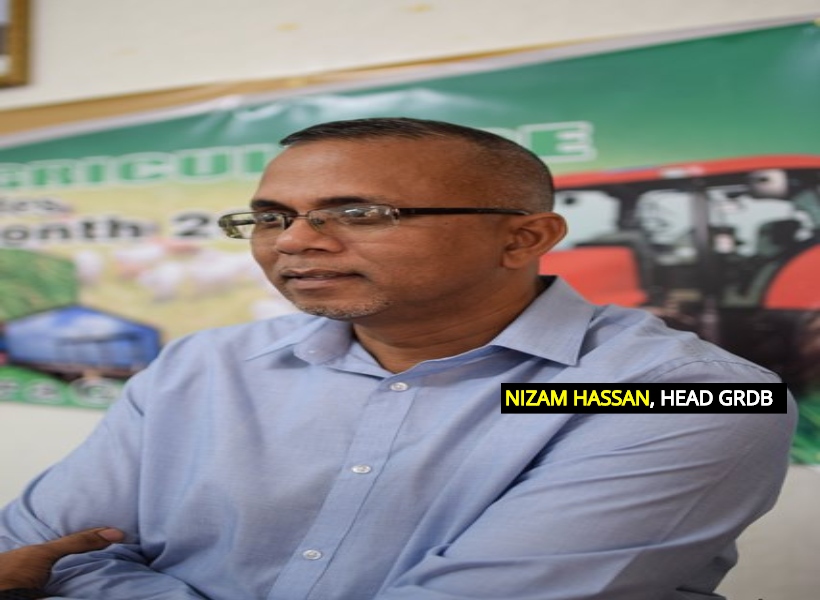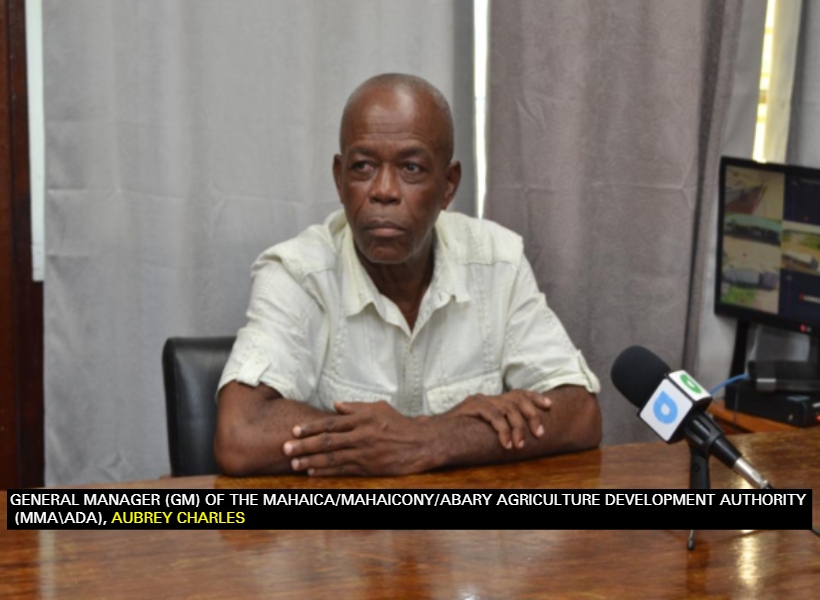While there are lands available in Region Five (Mahaica/Berbice) that flood-affected farmers can access, these domains are undeveloped, says General Manager (GM) of the Mahaica/Mahaicony/Abary Agriculture Development Authority (MMAADA), Aubrey Charles.

His disclosure comes at a time when several rice fields in the region have recorded high levels of salinity (salt) in the soil that came as a result of two bouts of hightide-induced flooding along the coastline last month.
General Manager (GM) of the Guyana Rice Development Board (GRDB), Nizam Hassan recently told Guyana Standard that it can take up to three crop seasons (18 months) for the salt content to stabilise. Failure to minimise the salt content can result in little or no yield, he said. This process of stabilising the soil will obviously incur costs on the part of the farmer since equipment and labour will be required.

This publication, in a bid to ascertain if there are lands available for use until the situation subsides, was told by Charles that there are no developed lands available.
Quizzed whether the entity has a policy to provide lands to farmers in the event of a disaster, Charles said that he is unaware of any such policy.
He, however, noted that the MMA/ADA is tasked with overlooking all state lands that fall within that district, and anyone – including farmers – desirous of obtaining lands, can visit the entity and make a formal request. They will be advised on the proper course of action, Charles added.
It is not clear whether obtaining lands will be a more viable approach for farmers, as lands given by the MMA/ADA, are given “as is”. Charles confirmed that it is up to the lessee to develop these lands to his/her specification.
Rice farmer, Vijai “Curry” Persaud, told this publication that deciding the most viable route will require an in-depth cost analysis since both approaches – draining the salt, and clearing overgrown vegetation on virgin lands – will attract somewhat heavy costs.

“You will have to throw limestone on the soil to bring up back that sweet, and flush out the salt with fresh water. That is money. And if farmers get more lands, they will have to clear it out, and sometimes there are trees that have to cut down, and then drainage is another big thing. So is still money. So, they will have to see which one cheaper,” the farmer said.
(Flood pics taken from Reel Guyana)













